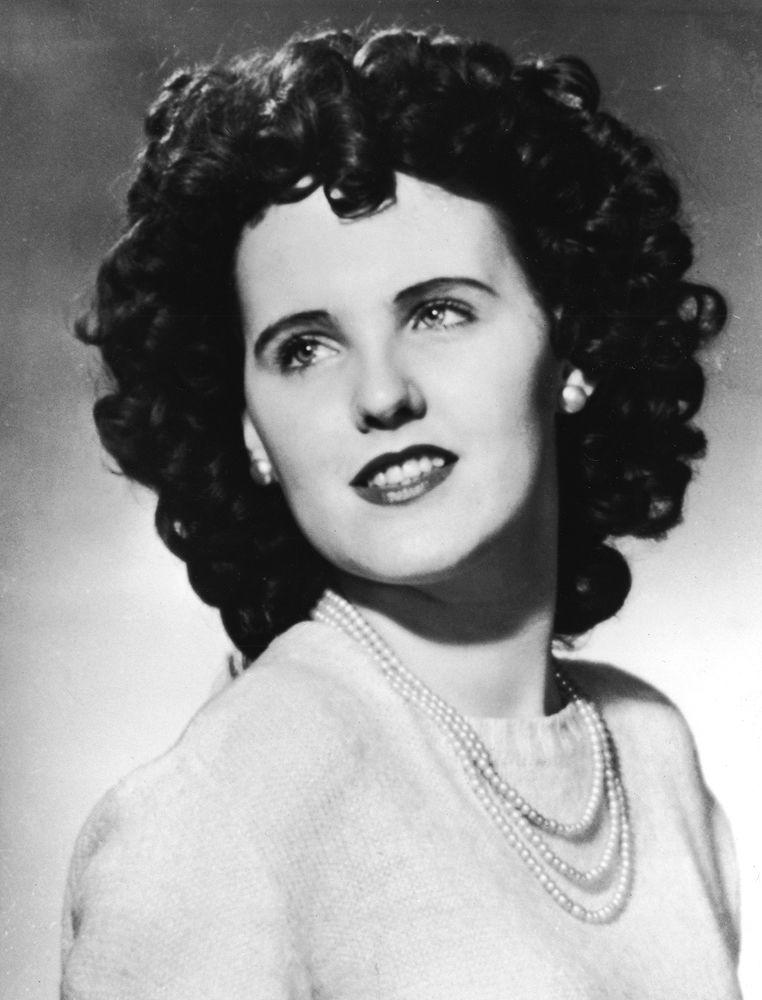A brief history of every Black Dahlia adaptation (and some conspiracy theories)
I Am the Night, a new miniseries from Wonder Woman director Patty Jenkins (starring Chris Pine), is a moody L.A. noir in which the famed Black Dahlia murder swirls in the background. (We gave it a B.) Falling as it does in the intersection of the extremely American phenomena of unattained fame, violence against women, and sensationalized media coverage, the Black Dahlia case has long been one of the country’s most notorious unsolved murders. Before you get a chance to see what Jenkins and Pine have done with the story, we’re going to take a thorough look at the murder that’s captivated America for over 70 years.
The basic facts behind the discovery of Elizabeth Short’s body remain unchanged:
On the morning of Jan. 15, 1947, a housewife named Betty Bersinger discovered the mutilated body of 22-year-old Elizabeth Short on the sidewalk of a parking lot in Leimert Park in Southwest Los Angeles. Bersinger initially thought she’d discovered a discarded mannequin: Short’s body had been washed, cut in half, drained and washed of blood, and posed with her arms over her head. When details of the gruesome murder emerged in the press, she was dubbed “The Black Dahlia” for a supposed affinity for dark clothing (and as a play on the film The Blue Dahlia, Raymond Chandler’s first original screenplay.) The murder remains unsolved.

Short grew up in Medford, Mass., the third of Phoebe and Cleo Short’s five girls; the pair built miniature golf courses until the stock market crash of 1929. Cleo disappeared in 1930, and his car was later found abandoned on the Charlestown Bridge, a presumed suicide — the family later received word that he was in fact alive and living in California. Elizabeth relocated to Vallejo to join him, though they argued frequently and she moved out in January 1943, eventually getting arrested in Santa Barbara for underage drinking. The arrest sent her bouncing back and forth to Massachusetts and Florida for a time, before relocating to Los Angeles in 1946. Before she died, she was working as a waitress and living behind a nightclub on Hollywood Boulevard. Although she had no credits to her name, Short was regularly described as an “aspiring” or “would-be actress.” Lastly, various rumors cropped up around Short after her death — she was a prostitute, she was a closeted lesbian, she was circling the pornographic industry in the city — though these have all been disputed and none were substantially proven.

Police quickly descended on the scene, though the identification of the body was actually thanks to The L.A. Examiner, who offered to transmit fingerprints taken from the scene to the F.B.I. via the primitive “Soundphoto” service, in exchange for an exclusive reveal of Short’s identity. The F.B.I., for their part, claim to have identified Short in just under an hour, thanks to her arrest in 1943, though the LAPD honored their agreement with the Examiner, and Short’s identity was released to the public the next day.
Nine days after Bersinger stumbled onto Short’s body, an envelope with Short’s Social Security card and address book, among other items, was mailed to the Examiner. The sender clipped letters from movie ads to write their message, including the phrase “Heaven is HERE!” The package reeked; gasoline had been used to remove traces of fingerprints from the contents. The address book had a name embossed on the cover (Mark Hansen) and police followed up with him and several other names in the book, but no significant leads materialized.
There was a brief glimmer of hope when The Examiner received another letter on January 29, reading: “Here it is. Turning in Wed., Jan. 29, 10 am. Had my fun at police. Black Dahlia Avenger.” Police dutifully set up at the specified location and time to no avail; at 1:00pm, the Examiner offices received another cut-and-pasted letter, which read: “Have changed my mind. You would not give me a square deal. Dahlia killing was justified.” Eventually, the Herald-Express also received a letter, reading: “I will give up on Dahlia killing if I get 10 years. Don’t try to find me.”
Part of the problem with the Black Dahlia investigation was, presumably, the media. Sensationalistic coverage dominated the pages of the various dailies, which was a double-edged sword: It had the benefit of allowing police to keep certain aspects of their investigation shrouded in mystery, but it also encouraged crank confessions and calls. Within several months, the case was officially cold.
Well, that’s it’s own book entirely. Here’s a choice selection:
There are rumors that connect the Black Dahlia to the whimsically-named Cleveland Torso Murders, which took place in the titular city in the 1930s.
Another theory links the Black Dahlia with so-called “Lipstick Killer” William Heirens (who famously scrawled “For heavens Sake catch me Before I kill more I cannot control myself” in lipstick at the scene of one of his crimes), based on similar patterns in Heirens’ handwriting and that of the “Black Dahila Avenger” who mailed letters to the Examiner.
One of the most truly wild theories is that put forward by crime writer Steve Hodel, whose book Black Dahlia Avenger: The True Story puts forth the theory that the killer was his own father. George Hodel, who possessed a genius-level IQ and ran with a hard-partying L.A. crowd that included filmmaker John Huston, novelist Henry Miller, and photographer Man Ray, was described as a boyfriend of Short’s in some early media reports. He was also trained as a surgeon, and Steve points out that investigators originally concluded that Short’s killer must have had a medical background to halve her body so efficiently. Hodel’s handwriting purportedly also matched one of the letters sent to the press, which has led some people to conclude that Hodel was responsible for the Heirens killings as well (and that he framed an innocent man for them). Probably most damning: A 50-year-old grand jury file that included transcripts from bugs placed at George Hodel’s home. In one of the recorded conversations, George can be heard saying “Supposing I did kill the Black Dahlia. They couldn’t prove it now.”
The first time the Black Dahlia story appeared onscreen, it was in Who Is the Black Dahlia?, a 1975 TV movie starring Lucie Arnaz as Elizabeth Short. True Confessions, written by Gregory Dunne, was a 1977 fictionalization of the case that went a long way towards spreading misinformation about Short and the Dahlia case; a Robert De Niro-Robert Duvall adaptation written by Dunne and Joan Didion, was released in 1981.
The next important step in the Dahlia canon is James Ellroy’s 1987 book of the same name. A sprawling work that brought the hard-boiled Ellroy to prominence (a rise that culminated with L.A. Confidential), it freely mixes fact and fiction while tying the murder to police corruption, L.A. politics and the tenor of the city following World War II. Brian de Palma would eventually adapt it into the 2006 film. (We gave it a B-.)
The Black Dahlia has also infiltrated the world of music, either as the subject of a song — Wikipedia lists songs called “Black Dahlia” by Hollywood Undead, Anthrax, Porcupine Tree, and Angel Haze. Death-metallers The Black Dahlia Murder simply took the whole thing as their band name.
The Black Dahlia murder popped up in the first season of Ryan Murphy’s American Horror Story also features Mena Survari as the ill-fated Short.
“I’ve been to the house where she was supposedly murdered, on Franklin Ave in L.A.,” Murphy told EW in 2011. “The thing that fascinated me about the case is that there were more than 60 people who claimed credit for that murder,” he continues. And then he provides as good an epigraph as any for why an unsolved murder from the late ’40s continues to resonate with audiences today: “I’ve always been obsessed about that idea that our culture has: What fame is about.”


